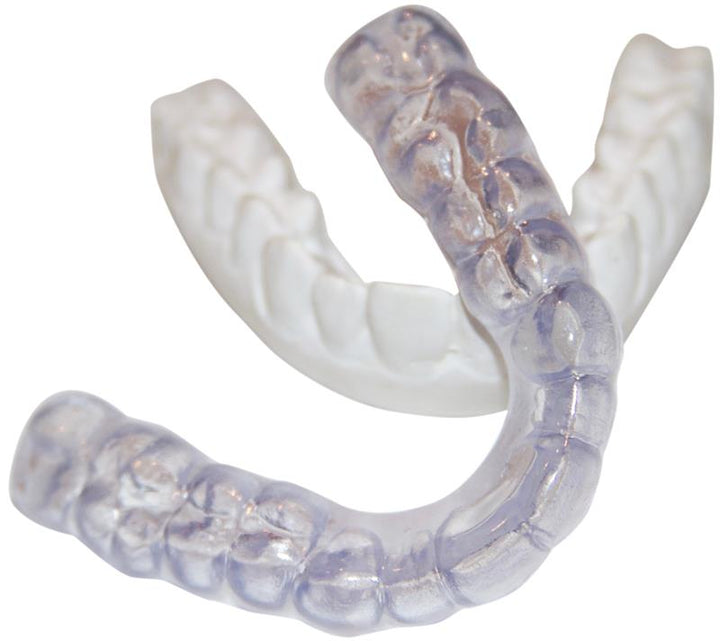What we often call TMJ is truly what should be termed TMJ dysfunction. TMJ simply refers to the temporomandibular joint (the jaw joint), but when people talk about having TMJ, they mean having problems with the joint.
These kinds of problems can include tenderness, stiffness, clicking sounds, pain around the ear, headaches, and difficulty chewing or opening and closing the jaw. As I’m sure you know TMJ dysfunction impacts many daily tasks, like talking and eating, and it can cause issues of chronic pain.
So, let’s break down the steps you need to take to treat the issue.
Learn About the Causes of Your TMJ.
TMJ issues do not always have identifiable causes. You may be genetically prone to problems. However, TMJ dysfunction can be a sign of a tumor in the jaw area or connective tissue weakness or arthritis. So, it is a good idea to talk to you doctor, especially if the problems have arisen out of nowhere.
You can also ask your dentist to look at your bite. Sometimes, when your alignment is off, your jaw carries more tension as it tries to compensate for the fact that your teeth do not fit well together. You can then make a plan of treatment with an orthodontist.
If you rule out any underlying conditions that those professionals can help you to address, no fear: there are still ways you can address the issue.
Practice TMJ Exercises.
There are a number of exercises you can find online to help you address TMJ dysfunction. These exercises reduce muscle tension and pain and help improve jaw movement. They also help you learn to relax your jaw muscles and body for a good night's sleep.
Many of them include gentle opening and closing of the mouth, either independently or by manipulating it with the hand.
One well-known physical therapy routine is Rocabado’s 6x6 Exercise Routine:
First:
Place the tip of the tongue on the top of the mouth, putting gentle pressure on the palate.
Second:
Open and close the jaw while keeping the tongue in that position.
Third:
Use two fingers to open and close your jaw still with the tongue on the palate.
Four:
Raise and lower the chin by nodding the head.
Five:
Squeeze the shoulder blades together while lifting and lowering the chest.
Six:
Bring your chin toward your neck to form a double chin, then push it out again.
It will be most helpful to find pictures and videos online to help guide you.
Relax the Jaw with Moisture and Heat.
Relaxation is important for many reasons, and it can help with TMJ symptoms. Using a moist, warm towel is one of the best ways to get your jaw muscles to relax. If you are experiencing severe pain, you can also try alternating this with an ice pack (always wrapped in a towel) and taking an anti-inflammatory.
It’s also handy if you avoid foods that seem to trigger irritation and inflammation. Chewy and hard food can prove particularly problematic.
Prioritize Stress Reduction.
Stress can aggravate TMJ pain, so it's important to manage stress levels. Learn how to relax and practice mindfulness. Regular exercise is a great way to relieve stress; so is time spent outside. You can always combine the two by jogging in your neighborhood, doing yoga in the park, or going on a hike.
It can also help to have a healthy wind-down routine at the end of the day, like meditation, a bath, stretching, or quiet reading.
Protect Your Teeth and Gums.
If you are experiencing tension in your jaw, the chances are you are clenching or grinding your teeth fairly regularly during the day, night, or both.
Do you notice a headache after rising from bed in the morning? Do you feel any sensitivity in your teeth? Does your dentist spy any signs of damage to your enamel?
If you are clenching or grinding your teeth, you can damage them (and your gums) over time. You can even wind up with a cracked tooth, a loose tooth, or a greater chance of gum disease. So, you will want to take measures to protect your teeth and gums.
A night guard is essential for protecting your teeth while you sleep. It cushions them from pressure and serves as a barrier to friction. You can wear it on the top or the bottom teeth.
For the best fit, choose a custom night guard made from a mold of your own teeth. You can do this through your dentist or through our site: TeethNightGuard. There, you can pick from a variety of densities—harder and thicker plastics for more durability and protection against very aggressive grinding and softer and more flexible plastics if you need something more comfortable with a lower profile.
JOIN OUR NEWSLETTER! RECEIVE PROMOTIONS & COUPONS FOR CUSTOM DENTAL NIGHT GUARDS
INTERESTED IN BECOMING AN AFFILIATE OF TeethNightGuard.com?
Earn 15% commission for simply sharing with your friends and family through email or social media such as Facebook, Reddit, or Twitter. Sign up and learn more here: https://www.teethnightguard.com/pages/register-affiliate-account
EXTRA DURABLE 3MM CUSTOM NIGHT GUARD - MAXIMUM DURABILITY AND COMFORT - MOST RECOMMENDED

$119.99
Item Number SWSPRO Manufacturer Sparkling White Smiles Dental Lab Rating Product Description Love this product? Share the product page link with Friends and Family. Simply copy the product page web address or this link: Custom Teeth Night Guard and post!… Read More